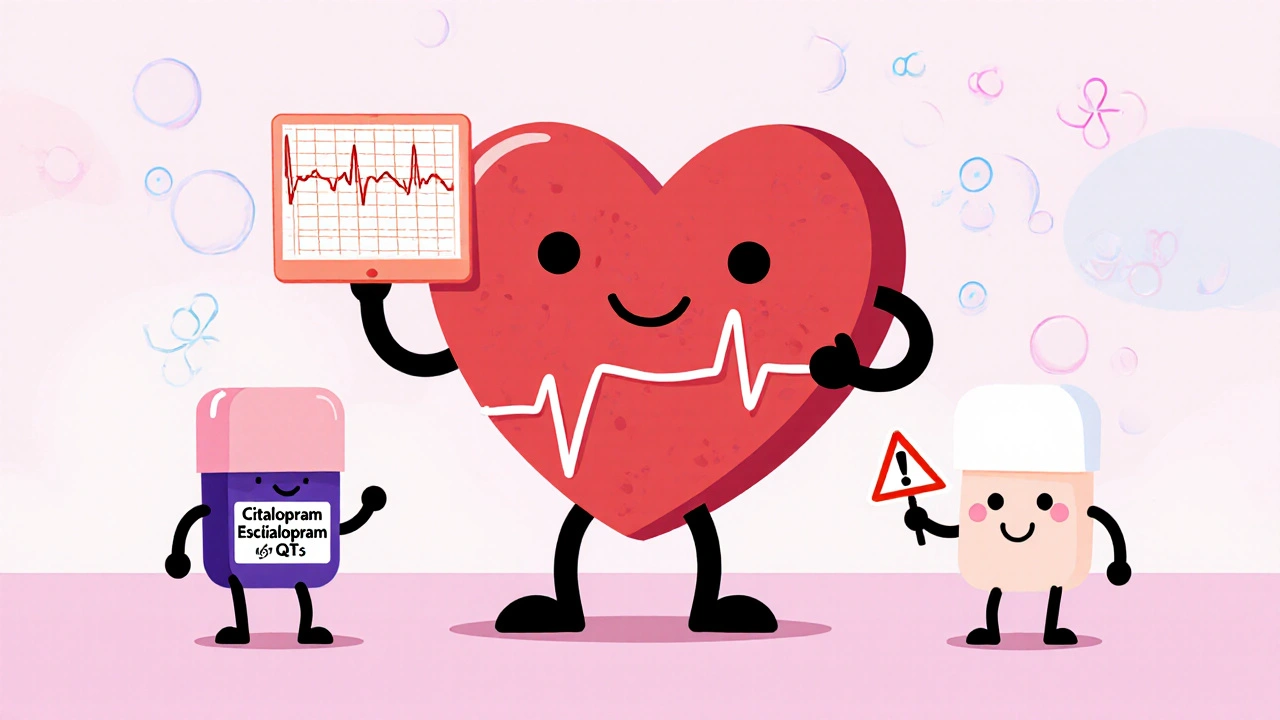Citalopram Safety: What You Need to Know About Side Effects, Interactions, and Proper Use
When you're taking citalopram, a selective serotonin reuptake inhibitor (SSRI) used to treat depression and anxiety. Also known as Celexa, it helps balance brain chemicals—but it’s not without risks if used carelessly. Many people start citalopram expecting quick relief, but the real challenge isn’t just getting better—it’s staying safe while you do.
One of the biggest dangers with citalopram comes from mixing it with other drugs. MAO inhibitors, a class of antidepressants that can cause life-threatening reactions when combined with SSRIs must never be taken alongside citalopram. Even some over-the-counter cough syrups, herbal supplements like St. John’s wort, or painkillers like tramadol can push serotonin levels too high, triggering serotonin syndrome, a rare but serious condition that causes confusion, rapid heart rate, high blood pressure, and muscle stiffness. If you’ve ever been told to avoid certain meds because "they might interact," this is why.
Side effects aren’t always obvious at first. Nausea, drowsiness, or dry mouth? Common. But if you notice new shaking, extreme restlessness, or sudden mood swings—especially in the first few weeks—those aren’t just "adjusting." They’re signals. Older adults and people with heart conditions need extra caution: citalopram can affect heart rhythm, and the FDA warns against doses above 40 mg daily for most people. It’s not about being scared—it’s about knowing what to watch for.
Some people stop citalopram cold turkey because they feel better or hate the side effects. Big mistake. Stopping too fast can cause dizziness, brain zaps, or even rebound anxiety. Tapering off under a doctor’s care isn’t optional—it’s part of safe use. And if you’re pregnant, breastfeeding, or planning to be, talk to your provider. Citalopram crosses into breast milk and the placenta, and while many moms take it safely, the timing and dosage matter.
What you’ll find below isn’t a list of warnings—it’s a collection of real, practical stories and facts from people who’ve walked this path. You’ll see how others managed side effects, avoided dangerous combos, tracked symptoms with a diary, and worked with their doctors to find the right balance. Whether you’re just starting citalopram, thinking about switching, or dealing with long-term use, these posts give you the clear, no-fluff guidance you need to stay in control.

Citalopram and Escitalopram: QT Prolongation Risks and Safe Dose Limits
Haig Sandavol Nov 23 14Citalopram and escitalopram can prolong the QT interval, raising the risk of dangerous heart rhythms. Learn the safe dose limits, who’s at risk, and why escitalopram is often preferred over citalopram for cardiac safety.
More Detail